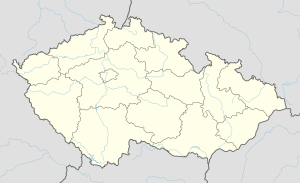| Battle of White Mountain | |||||||||
|---|---|---|---|---|---|---|---|---|---|
| Part of the Bohemian Revolt during the Thirty Years' War | |||||||||
 Battle of White Mountain, oil painting by P. Snaijers | |||||||||
| |||||||||
| Belligerents | |||||||||
|
Holy Roman Empire Catholic League Spanish Empire |
Bohemian Confederation Electoral Palatinate | ||||||||
| Commanders and leaders | |||||||||
| Strength | |||||||||
|
23,000 12 guns[1] |
21,000 10 guns[1] | ||||||||
| Casualties and losses | |||||||||
| 650 killed and wounded[2] | 2,800 killed and wounded[2] | ||||||||
Location within Prague | |||||||||
The Battle of White Mountain (Czech: Bitva na Bílé hoře; German: Schlacht am Weißen Berg) was an important battle in the early stages of the Thirty Years' War. It led to the defeat of the Bohemian Revolt and ensured Habsburg control for the next three hundred years.
It was fought on 8 November 1620. An army of 21,000 Bohemians and mercenaries under Christian of Anhalt was defeated by 23,000 men of the combined armies of Ferdinand II, Holy Roman Emperor, led by Charles Bonaventure de Longueval, Count of Bucquoy, and the German Catholic League led by Johann Tserclaes, later Count of Tilly, at Bílá Hora ("White Mountain") near Prague.[3] Bohemian casualties were not severe but their morale collapsed and Imperial forces occupied Prague the next day.
- ^ a b Wilson 2009, pp. 304, 306.
- ^ a b Wilson 2009, p. 306.
- ^ The Battle of White Mountain, 11-06-2003 – Radio Praguel.

